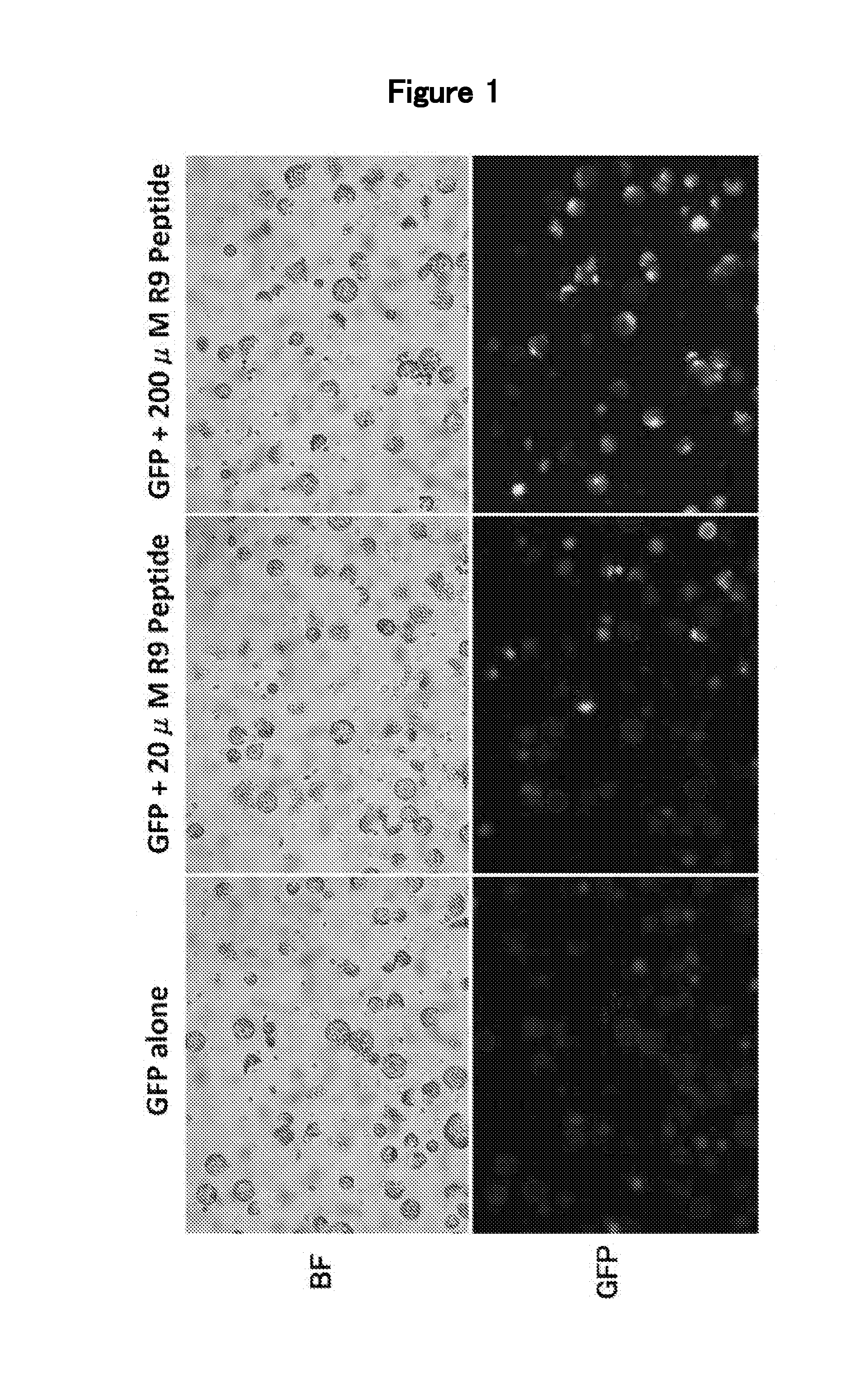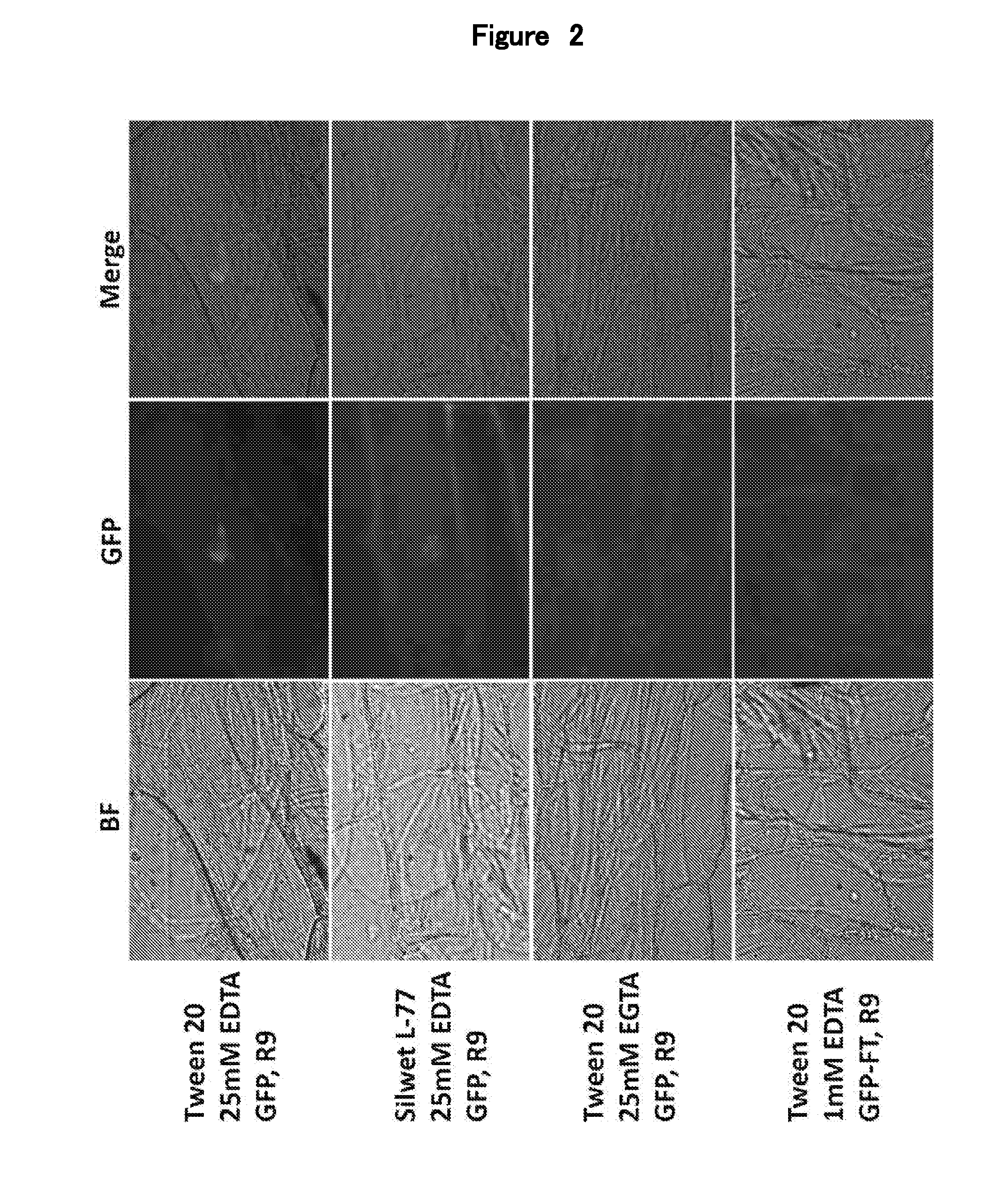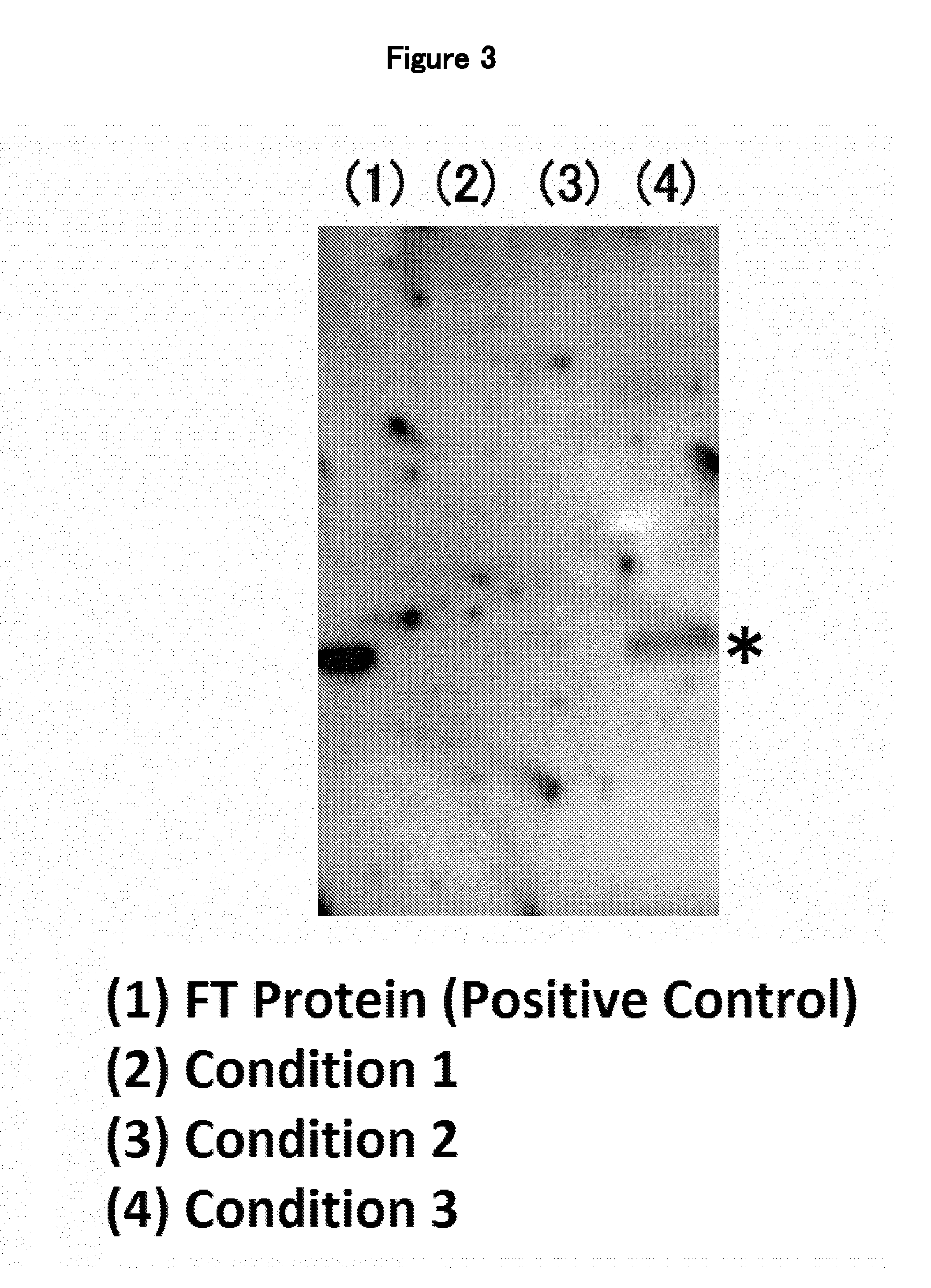Treating agent for plant cell walls, substance delivery method using treating agent, and substance delivery system
a technology of treating agent and plant cell wall, applied in the direction of bryophytes, peptides, biocide, etc., can solve the problems of inability to control the degree and/or direction of mutation as desired, the degree of phenotypic change is required for a long time to obtain desired traits, and the probability of occurrence is extremely low, so as to achieve phenotypic changes in the host plant. , the effect of causing phenotypic changes
- Summary
- Abstract
- Description
- Claims
- Application Information
AI Technical Summary
Benefits of technology
Problems solved by technology
Method used
Image
Examples
example 1
Verification of Cell Penetrating Peptide R9 Using Plant Cells
[0103]To verify that the R9 peptide was also evenly effective for plant cells other than cultured cells, protoplasts of torenia were used and observed for their uptake of green fluorescent protein (GFP) in the presence of the R9 peptide. Torenia leaves (0.5 g) were treated in an enzyme solution (1% Onozuka RS, 0.1% pectolyase Y-23, 0.45 M mannitol) at 30° C. for 2 hours to prepare protoplasts. The protoplasts were washed with 0.45 M mannitol and then divided into 50 μl aliquots, followed by centrifugation to prepare protoplasts. The protoplasts were each suspended in 50 μl of a buffer (0.45 M mannitol, 1× PBS, 0.1 mg GFP, (0, 20, 200 μM) R9 peptide) and observed for intracellular migration of GFP under a fluorescence microscope (FIG. 1).
[0104]With increase in the concentration of the R9 peptide, cells showing GFP uptake were confirmed to increase in number. In the presence of 200 μM R9 peptide, good GFP uptake was observed...
example 2
Permeability of Cell Walls
[0105]Various test solutions containing a fluorescent protein, GFP or GFP-FT, and the R9 peptide were prepared and applied to onion bulbs for verification of GFP uptake. The ingredients of the test solutions verified are shown below:
[0106]salt (NaCl), acidic buffer (citric acid), organic solvent (toluene, ethanol), cell wall lyase (pectolyase), surfactant (saponin, Silwet L-77, Tween 20, Triton X-100, CHAPS, CTAB, SDS), chelator (EGTA, EDTA, CDTA, BAPTA), DMSO, and glycerol.
[0107]The ingredients listed above were used alone or in combination to repeat trial and error experiments. As a result, it was found that the cell wall permeability in living cells could be increased upon combination of a calcium chelator (EDTA, EGTA) and a surfactant (Silwet L-77, Tween 20).
[0108]Onion bulbs were cut into boat-shaped pieces, and test solutions (100 μl each) prepared at various concentration conditions (0.1× PBS, 1 to 100 mM chelator, 0.005% to 0.05% surfactant, 0.1 mg ...
example 3
Verification of Macromolecular Compound (FT Protein) Migration
[0109]The FT gene was first identified as one of the responsible genes for late flowering mutants and was suggested to be among the major regulatory factors for day length sensitivity, together with CO and GI genes (M. Koornneef et al.: Mol. Gen. Genet. 229, 57 (1991)). Thereafter, the FT gene was sequenced and FT-overexpressing plants were analyzed, thus indicating that early flowering traits would be acquired simply upon overexpression of the FT gene (Y. Kobayashi et al.: Science 286, 1960 (1999)). Moreover, experiments using grafts and analysis of expression sites suggested that the FT protein was a protein biosynthesized in leaves and transported to the shoot apex, and would be a possible candidate for florigen (H. An et al.: Development 131, 3615 (2004)). The identity of florigen, which remained unknown for many years, was elucidated in 2007 and shown to be the FT protein (rice Hd3a protein) (L. Corbesier et al.: Sci...
PUM
| Property | Measurement | Unit |
|---|---|---|
| molecular weight | aaaaa | aaaaa |
| pore size | aaaaa | aaaaa |
| diameter | aaaaa | aaaaa |
Abstract
Description
Claims
Application Information
 Login to View More
Login to View More - R&D
- Intellectual Property
- Life Sciences
- Materials
- Tech Scout
- Unparalleled Data Quality
- Higher Quality Content
- 60% Fewer Hallucinations
Browse by: Latest US Patents, China's latest patents, Technical Efficacy Thesaurus, Application Domain, Technology Topic, Popular Technical Reports.
© 2025 PatSnap. All rights reserved.Legal|Privacy policy|Modern Slavery Act Transparency Statement|Sitemap|About US| Contact US: help@patsnap.com



